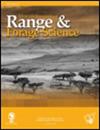从平衡的角度看待南部非洲大量反刍动物生产对温室气体排放的贡献
IF 1.9
4区 环境科学与生态学
Q3 ECOLOGY
引用次数: 5
摘要
人们普遍认为,反刍动物会产生大量的温室气体(GHG),导致全球变暖。反刍动物的生产也是世界上最大的土地使用者,非洲南部也不例外。最近的估计表明,畜牧业产生的甲烷约占世界温室气体排放量的4%,而粮农组织的初步估计为18%。估计表明,在20年期间,南部非洲与畜牧业生产直接相关的温室气体排放总量没有增加,而与畜牧业生产相关的温室气体排放强度(每公斤动物产品)却减少了40%。这可能是牲畜生产力提高和品种选择的结果。例如,四种本地肉牛品种生产力的提高使计算的碳足迹减少了7-12%。最近的研究表明,南非不同牛肉品种之间的甲烷浓度可能相差44%,杂交对断奶小牛生产的碳足迹影响很小。诸如使用本地和适应基因型、替代育种目标、替代生产系统以及可持续管理等干预措施将是环境友好型畜牧业生产的关键。本文章由计算机程序翻译,如有差异,请以英文原文为准。
A balanced perspective on the contribution of extensive ruminant production to greenhouse gas emissions in southern Africa
There is a general perception that ruminants produce large quantities of greenhouse gases (GHG) which contribute to global warming. Ruminant production is also known as the world’s largest user of land, and southern Africa is no exception. Recent estimates indicate that livestock are responsible for approximately 4% of the world’s GHG emissions through methane production, compared with an initial estimate of 18% by the FAO. Estimates indicate that the total GHG emissions directly related to livestock production in southern Africa did not increase over a period of 20 years, whereas the intensity of livestock–production-related GHG emissions (per kg animal product) was reduced by 40%. This may be the result of increased livestock productivity and breed selection. For instance, increases in the productivity of four indigenous beef cattle breeds decreased the calculated carbon footprint by 7–12%. Recent studies indicated that the methane intensity between beef breeds in South Africa can differ by 44%, and that crossbreeding can have small to moderate effects on the carbon footprint of weaner calf production. Interventions such as the use of indigenous and adapted genotypes, alternative breeding objectives, alternative production systems as well as sustainable management will be key to environmentally friendly livestock production.
求助全文
通过发布文献求助,成功后即可免费获取论文全文。
去求助
来源期刊

African Journal of Range & Forage Science
ECOLOGY-ENVIRONMENTAL SCIENCES
CiteScore
4.00
自引率
14.30%
发文量
35
审稿时长
>12 weeks
期刊介绍:
The African Journal of Range & Forage Science is the leading rangeland and pastoral journal in Africa. The Journal is dedicated to publishing quality original material that advances rangeland ecology and pasture management. The journal aims to publish research of international importance from any region, but as an African journal, we are particularly interested in research from Africa and relevant to the continent. The Journal promotes both science and its application and authors are encouraged to explicitly identify the practical implications of their work. Peer-reviewed research papers and research notes deal primarily with all aspects of rangeland and pasture ecology and management, including the ecophysiology and biogeochemistry of rangelands and pastures, terrestrial plant–herbivore interactions (both domestic and wild), rangeland assessment and monitoring, effects of climate change on rangelands, rangeland and pasture management, rangeland rehabilitation, ecosystem services in support of production, conservation and biodiversity goals, and the identification and development of intensive and semi-intensive pasture and forage resources to meet livestock production needs. Articles highlighting transdisciplinary linkages among biophysical and social sciences that support management, policy and societal values are particularly encouraged. The Journal includes relevant book reviews and invited perspectives that contribute to the development of range and forage science. Letters to the editor that debate issues raised in the Journal are acceptable. The African Journal of Range & Forage Science is the official journal of the Grassland Society of Southern Africa.
 求助内容:
求助内容: 应助结果提醒方式:
应助结果提醒方式:


